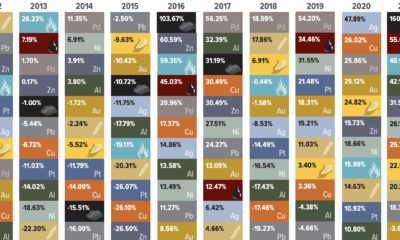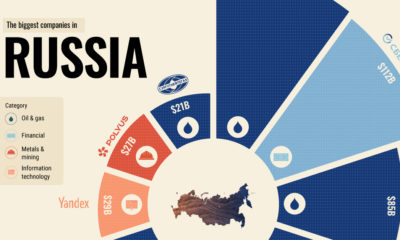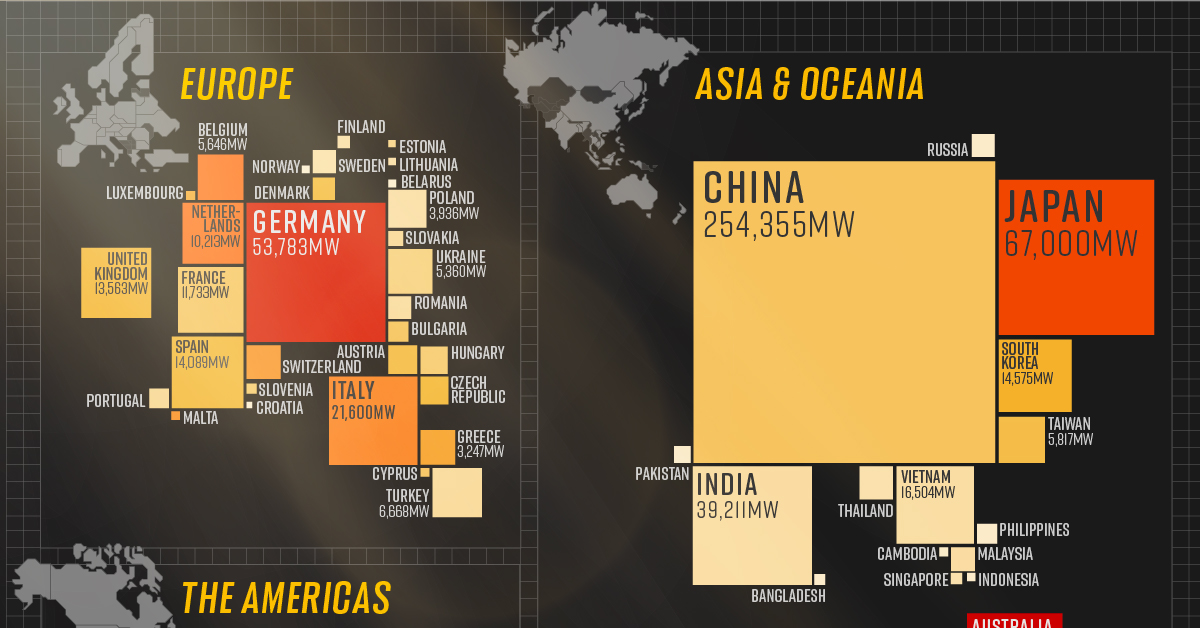In this infographic with JMBullion, we highlight key facts and comparisons on some of the world’s most popular mints, including the United States Mint, the Royal Canadian Mint, Perth Mint, PAMP Suisse, and Sunshine Minting.
Some quick facts on each of the world’s most popular mints: The United States Mint was founded in 1792, and now has minting operations in Philadelphia, Denver, West Point, and San Francisco. The mint produced more than 17 billion coins for circulation in 2015 for the fastest annual pace since 19.4 billion coins were struck in 2001. Legend holds that George Washington donated some of his personal silver to the Mint for manufacturing early coinage. The Royal Canadian Mint was founded in 1908 in Ottawa, Canada. It produces over one billion coins per year, with the Silver Maple Leaf as its signature bullion offering. In 2007, the Royal Canadian Mint created the largest coin in the world – a 100 kg, 99.999% pure, $1 million gold bullion coin. The Perth Mint was founded in 1899 in Perth, Australia. It was originally built to refine metal from the gold rushes occurring in Western Australia, while also distributing sovereigns and half-sovereigns for the British Empire. In 1970, the Mint’s jurisdiction was moved to the State Government of Western Australia. The Australian Kookaburra (1990-), Koala (2007-), and Kangaroo (1990-1993, 2016-) are some of the mint’s most popular products among bullion buyers. PAMP Suisse, a private mint, was founded in Switzerland in 1977. The mint refines an impressive 450 tonnes of gold annually, and much of the gold used for worldwide jewelry production comes from PAMP. The Mint also produces the popular Fortuna bar, which is available in gold, silver, and platinum, with sizes ranging from 1 gram to 100 oz. Sunshine Minting is another private mint. Founded in Idaho in 1979, Sunshine mints 70 million ounces of bullion each year, including its version of the popular Silver Buffalo Round. Sunshine Minting is also the primary supplier of one-ounce silver planchets (round metal disks, ready to be struck as coins) to the United States Mint.
on The world is adopting renewable energy at an unprecedented pace, and solar power is the energy source leading the way. Despite a 4.5% fall in global energy demand in 2020, renewable energy technologies showed promising progress. While the growth in renewables was strong across the board, solar power led from the front with 127 gigawatts installed in 2020, its largest-ever annual capacity expansion. The above infographic uses data from the International Renewable Energy Agency (IRENA) to map solar power capacity by country in 2021. This includes both solar photovoltaic (PV) and concentrated solar power capacity.
The Solar Power Leaderboard
From the Americas to Oceania, countries in virtually every continent (except Antarctica) added more solar to their mix last year. Here’s a snapshot of solar power capacity by country at the beginning of 2021: *1 megawatt = 1,000,000 watts. China is the undisputed leader in solar installations, with over 35% of global capacity. What’s more, the country is showing no signs of slowing down. It has the world’s largest wind and solar project in the pipeline, which could add another 400,000MW to its clean energy capacity. Following China from afar is the U.S., which recently surpassed 100,000MW of solar power capacity after installing another 50,000MW in the first three months of 2021. Annual solar growth in the U.S. has averaged an impressive 42% over the last decade. Policies like the solar investment tax credit, which offers a 26% tax credit on residential and commercial solar systems, have helped propel the industry forward. Although Australia hosts a fraction of China’s solar capacity, it tops the per capita rankings due to its relatively low population of 26 million people. The Australian continent receives the highest amount of solar radiation of any continent, and over 30% of Australian households now have rooftop solar PV systems.
China: The Solar Champion
In 2020, President Xi Jinping stated that China aims to be carbon neutral by 2060, and the country is taking steps to get there. China is a leader in the solar industry, and it seems to have cracked the code for the entire solar supply chain. In 2019, Chinese firms produced 66% of the world’s polysilicon, the initial building block of silicon-based photovoltaic (PV) panels. Furthermore, more than three-quarters of solar cells came from China, along with 72% of the world’s PV panels. With that said, it’s no surprise that 5 of the world’s 10 largest solar parks are in China, and it will likely continue to build more as it transitions to carbon neutrality.
What’s Driving the Rush for Solar Power?
The energy transition is a major factor in the rise of renewables, but solar’s growth is partly due to how cheap it has become over time. Solar energy costs have fallen exponentially over the last decade, and it’s now the cheapest source of new energy generation. Since 2010, the cost of solar power has seen a 85% decrease, down from $0.28 to $0.04 per kWh. According to MIT researchers, economies of scale have been the single-largest factor in continuing the cost decline for the last decade. In other words, as the world installed and made more solar panels, production became cheaper and more efficient. This year, solar costs are rising due to supply chain issues, but the rise is likely to be temporary as bottlenecks resolve.














